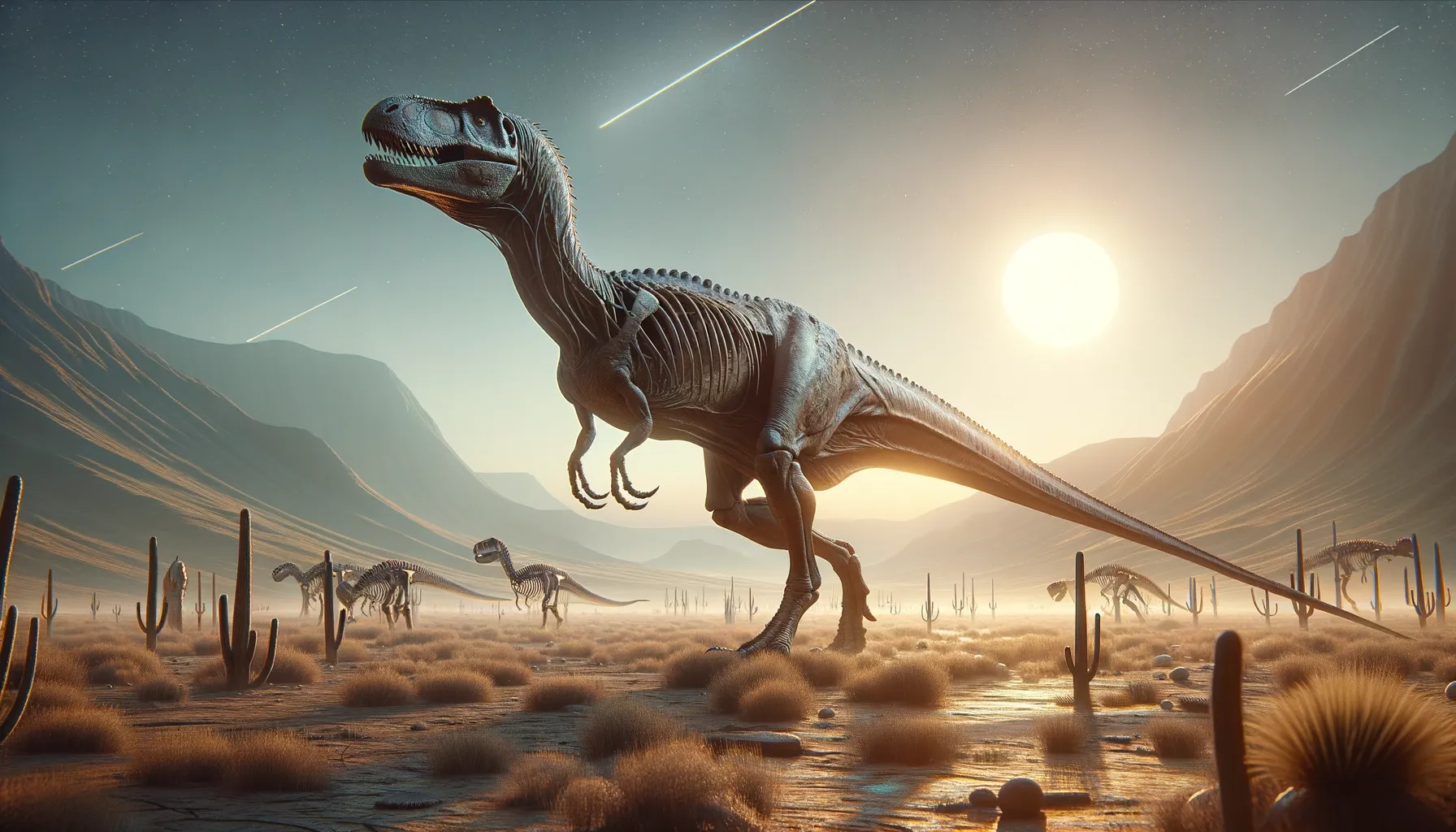
Macrogryphosaurus
A gentle giant of the Cretaceous.
Period
Cretaceous
Length
Up to 6 meters long.
Height
Roughly 2 meters tall.
Weight
Approximately 1,000 kg.
Macrogryphosaurus was a large-bodied dinosaur that inhabited the Cretaceous period, known for its unique skeletal features and relatively large size compared to other herbivores of its time. It was discovered in Argentina, providing critical insights into the diversity of dinosaurs in South America. This dinosaur is typically characterized by its long neck and tail, along with strong limbs, which suggest it was a capable mover, likely to travel for food across vast landscapes.
Diet
Macrogryphosaurus was herbivorous, feeding on a variety of flora that was abundant during the Cretaceous period. Its diet primarily included ferns, conifers, and cycads, using its well-developed jaws to process tough plant materials effectively.
Hunting
As a herbivore, Macrogryphosaurus did not hunt. Instead, it foraged for plants, using its height to reach vegetation not accessible to smaller dinosaurs. It likely roamed in groups, which could have offered protection from predators.
Environmental challenges
Living during the Cretaceous period, Macrogryphosaurus faced fluctuating climates which could have influenced the availability of its food sources. The changing sea levels during this era might have also reshaped its habitat periodically. Furthermore, it had to evade large predators of the time, necessitating a keen awareness of its surroundings.
Speed
Moderate runner for its size.
Lifespan
Estimated to be several decades.
First discovery
Discovered in Argentina in 1999.
Fun Facts
- Macrogryphosaurus was a medium-sized dinosaur that lived approximately 90 million years ago during the Late Cretaceous period.
- This dinosaur belonged to a group known as the Elasmosaurs, which were characterized by their long necks and small heads.
- Unlike many of its contemporaries, Macrogryphosaurus was likely an herbivore, feasting on plants rather than meat.
- Fossils of Macrogryphosaurus have primarily been found in what is now Argentina, providing insights into the dinosaur fauna of ancient South America.
- The name 'Macrogryphosaurus' means 'large enigmatic lizard', highlighting how its unique traits puzzled scientists at first.
- Macrogryphosaurus had a relatively lightweight skeleton which might have helped it move quickly to escape predators.
- This dinosaur lived in a lush environment filled with rivers and forests, offering plenty of vegetation for it to eat.
Growth and Development
Macrogryphosaurus likely experienced steady growth over several years, reaching maturity with a robust skeletal structure designed to support its large body. Juveniles probably stayed with their groups for protection until they were large enough to fend for themselves. The development phase might have been crucial for learning survival cues from older individuals.
Habitat
This dinosaur thrived in what is now modern-day South America, inhabiting areas that were a mix of forests and open plains. The lush vegetation in these regions provided ample food resources. The diverse environment could have supported large groups, aiding socialization and protection from predators.
Interaction with other species
Macrogryphosaurus likely shared its habitat with various other species, including predatory dinosaurs. It might have formed social groups to reduce the risk of predation. These groups could have interacted occasionally with other herbivorous dinosaurs, competing for similar food sources while benefiting from mutual protection.
Natural lifespan
Macrogryphosaurus likely lived for several decades in the wild.
Reproduction
Macrogryphosaurus, like other dinosaurs, reproduced by laying eggs. These eggs were possibly laid in nests, which might have been guarded by adults to prevent predation. Their reproductive strategy could have included multiple eggs per clutch to increase the odds of offspring survival despite environmental hazards.
Social behaviour
It possibly lived in herds, as social living could deter predators and help locate food. The herd behavior might have facilitated communication and coordinated movement across changing landscapes. Social interactions within the group were likely complex, involving vocal and physical gestures to maintain group cohesion.
Fossil locations
Macrogryphosaurus fossils have been primarily found in Argentina, specifically in the Neuquén Province. These findings are crucial for understanding the distribution of dinosaur species in South America. The preservation of these fossils has offered invaluable insights into the anatomy and lifestyle of mid-sized herbivorous dinosaurs of the Cretaceous period.
